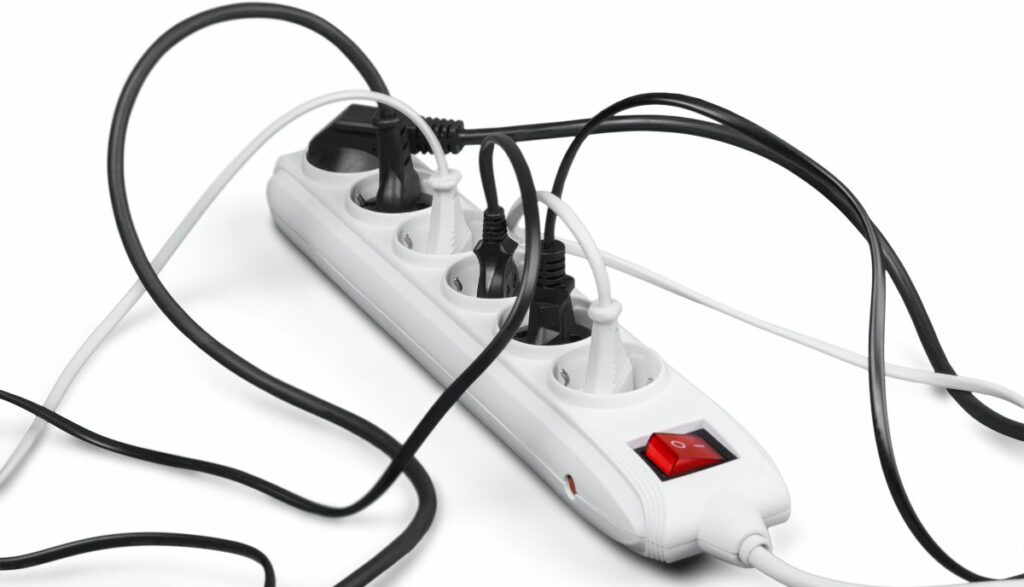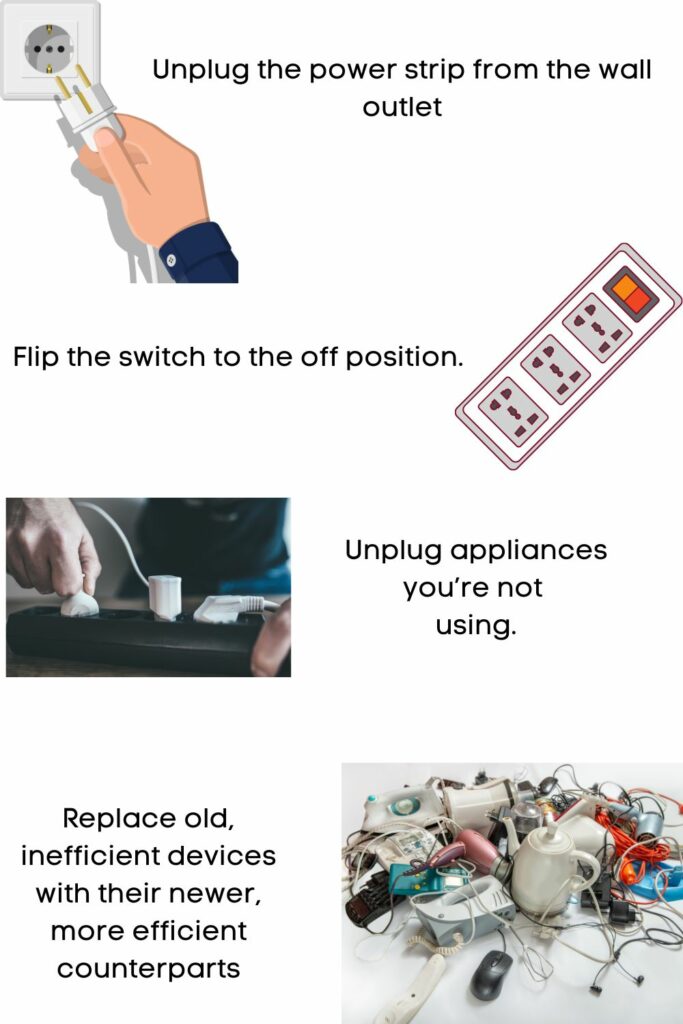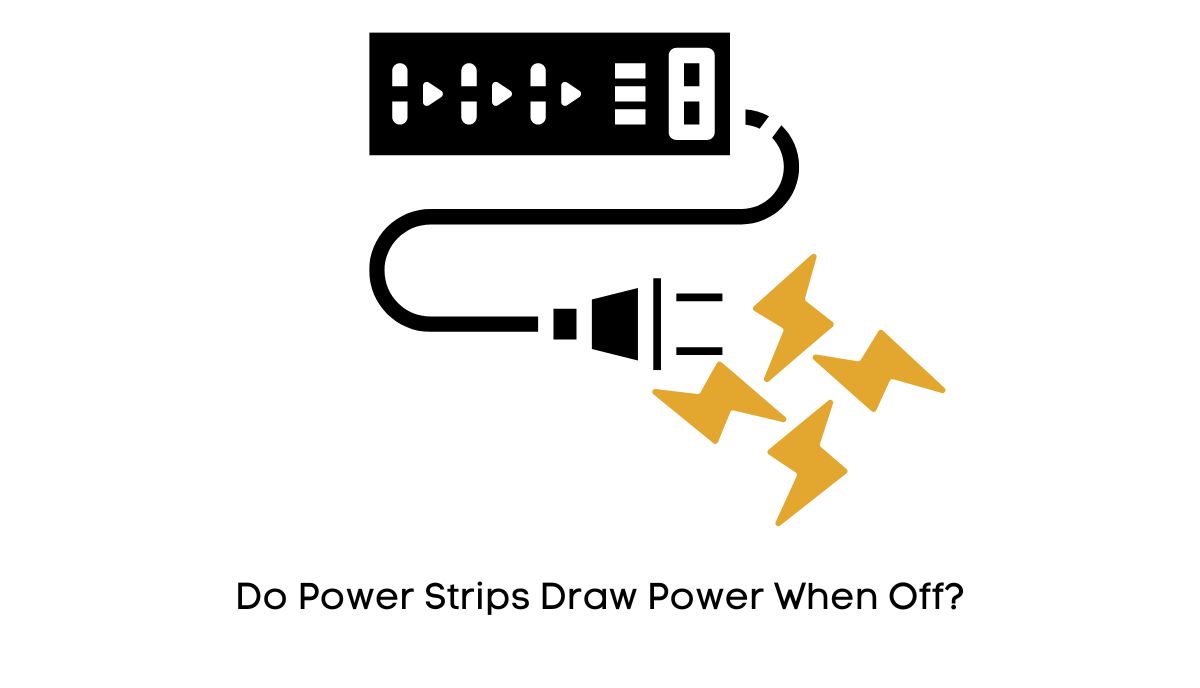Technically, the power strip cannot pull power from the circuit unless you attach appliances to its outlets. The power strip is merely a conduit. It cannot draw a current for its own purposes. Instead, it transmits energy to the appliances you connect. Without those appliances, the power strip is dormant. Admittedly, some power strips consume electricity. For instance, those lights you see that illuminate when the power strip has a power source use energy.
The same goes for the current sensors and motion detectors smart power strips usually offer. But the energy those functions consume is so tiny your electrical bill won’t reflect it. If they concern you, unplug the power strip from the wall outlet to prevent them from consuming more energy.
What about power strips with switches? Flipping the switch to the off position achieves the same objective as unplugging the power strip. It is similar to flipping the switch on a wall outlet. It disconnects all the connected appliances, preventing them from consuming phantom/vampire energy.
This is why electricians encourage consumers to buy switched power strips. Even laypeople that can’t be bothered to unplug a power strip will remember to flip the switch.
How Much Electricity Is Used By Leaving Things Plugged In?

Many appliances use electricity when you leave them plugged in. Bloomberg thinks this problem is getting worse because the number of smart appliances in residential settings is growing. For all their benefits, those devices are problematic because they don’t stop working.
Unless you unplug them, smart items will continue running in the background, performing updates, communicating with other appliances in your home, and waiting for you to reactivate them with a voice command or the push of a button.
They can’t perform those functions unless they maintain a continuous connection to a reliable power source. In other words, smart appliances consume energy 24/7. This is called phantom or vampire energy.
According to the Natural Resources Defense Council, the average American household loses $165 to phantom energy each year, which amounts to $19 billion annually. Consumers can shave $8 billion off their electrical bills by taking steps to curb standby/vampire energy.
What Are The Factors That Determine Standby Power Usage Of Power Strips?
Power strips by themselves don’t consume enough energy to matter. Yes, some of them have features that remain continuously active. For instance, if you can control a power strip’s functions remotely, the power strip will pull power from the wall outlet nonstop to make that mechanism available.
But again, they don’t use enough electricity to impact your utility bill significantly. Your biggest concern is the devices attached to the power strip. The more power they consume, the more energy they will waste in standby mode.
The same goes for appliances with an extensive collection of features. These are just a few of the items that use vampire energy:
- HVAC units are heavy-duty appliances. They may use noticeable quantities of electricity during standby mode because consumers want them to start running at a moment’s notice.
- TV – TVs are light-duty devices. Therefore, their standby energy consumption is also low. That being said, some people rarely switch these devices off, if ever, because they want their TVs to respond to a remote or voice command.
- Computer – Like TVs, some people rarely turn their computers off. They prefer to switch the devices to sleep mode. This can cause the standby energy consumption to increase to a significant amount after a few months and years. Fortunately, computers use minimal energy while in hibernation.
- Microwave – Microwaves use very little standby energy. Yes, they expend a lot of power to cook food. But any vampire energy they use goes to the clock and display. Therefore, microwaves shouldn’t concern you.
Devices with a standby mode tend to consume more energy than items that don’t offer that function. Power strips don’t provide a standby mode.
Methods To Measure The Standby Power Consumption Of Power Strips
Some manufacturers will reveal a standby mode’s energy consumption. That sounds counterintuitive. But you have to realize that standby mode is actually a good thing. Many manufacturers include a standby mode because consumers typically forget to turn off appliances they’ve stopped using.
Those devices will consume more energy in the absence of a standby mode. In essence, the standby mode is an energy-saving tool. It allows an electronic appliance to automatically switch to a state where it uses minimal energy.
Many brands will boast about the minuscule amounts of power their devices use in standby mode. It is a marketing tool that emphasizes a product’s eco-friendly attributes. You may also find this information in the manual or the manufacturer’s official website.
But what if the brand is silent about this issue? Many experts recommend an energy meter. You start by plugging the energy meter into the wall socket. And then, you connect the appliance to the energy meter.
It will keep you apprised of the electrical item’s energy consumption in real-time as well as the total consumption over a specified period. Power strips are tricky because they will show you the total energy consumption of all the items attached to their outlets.
Disconnect all those devices to get a better sense of the power strip’s vampire energy usage. The tiny readings you will see will put you at ease.
If you don’t own a smart meter and can’t afford to buy one right now, Save-On-Energy has an alternative solution. If you have a smart meter, your utility provider’s website or app will reveal your home’s hourly data.
Check the data at night when all your appliances are either off or in standby mode. This will paint a clear picture of your home’s overall vampire energy consumption.
Tips For Reducing Standby Power Consumption Of Power Strips

- Unplug the power strip from the wall outlet. The power strip cannot consume vampire energy if it doesn’t have access to the wall outlet.
- If the power strip has a switch, flip the switch to the off position. If your power strip doesn’t have a switch, get a replacement with a dedicated switch.
- Find a reliable manufacturer with a reputation for making energy-efficient products. Electricians tend to prioritize items with the Energy Star label. Energy Star comes from the Department of Energy and the Environmental Protection Agency in the United States. It allows consumers to lower their energy consumption by revealing a product’s energy efficiency. If you don’t live in the U.S., use the equivalent of the Energy Star rating in your country to select a suitable power strip.
- Don’t stop using power strips. Even though some smart strips consume vampire energy, they can still lower your overall energy consumption by allowing you to disconnect multiple devices simultaneously. Some power strips are smart enough to disconnect an outlet when the connected device enters standby mode. You would be doing yourself a disservice by discarding your power strips to lower your vampire energy consumption.
- Use standby savers. A standby saver is a smart plug. You connect the plug to the wall socket and then attach the power strip or appliance. Ovo Energy likes these devices because you can switch them off and every connected item with a remote control. If you’re too lazy to unplug a power strip, and you don’t know how to program smart power strips, a smart plug is the answer to all your prayers.
- Unplug appliances you’re not using. This matters to power strips without switches or smart technology that automatically disconnects items in standby mode. Physically pulling the plug out of the power strip reduces the overall vampire energy the power strip consumes.
- Replace old, inefficient devices with their newer, more efficient counterparts. This doesn’t apply to power strips. A power strip from today isn’t necessarily more efficient than a power strip from ten years ago, at least not in a way that matters to your utility bill. However, you should replace old, worn-out power strips with clear signs of damage.

